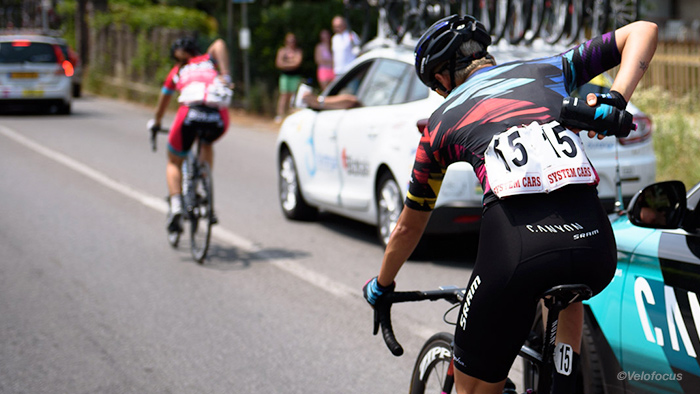When it comes to fueling for training and racing there are many different options available. For example, there are ways to keep the body fueled by using solids, semi-solids and liquids. Having all of these different options can tend to create confusion and challenges for athletes as to which is ideal and which is best for them. In addition, choosing the right type of fuel depends on many factors such as duration, intensity and what type of activities such as cycling, running or multisport. Let’s examine a few different options for fueling your body during training and racing.
Liquid Fuel
Fueling the body using liquids is one of the most efficient ways to keep the body properly fueled and hydrated during training and racing. For example, you can create a bottle that contains virtually everything you need from complex carbohydrates, simple sugars and electrolytes such as sodium, potassium, magnesium and calcium. By mixing together a fluid replacement drink with maltodextrin and additional electrolytes (if needed), you will have an easy and efficient way to stay fueled during training and racing.
Depending on your exact nutritional needs, duration of the event, intensity, weather, etc., you can create a bottle of liquid fuel that contains 200, 300 or 400+ calories. Plus, the great thing is the viscosity of this will be no different than if you simply used just one scoop of fluid replacement drink. According to Asker Jeukendrup, PhD, “carbohydrate ingestion during long-duration exercise lasting 2 hours or more nearly always delays the onset of fatigue and improves performance. Carbohydrate may also be beneficial during more intense continuous exercise lasting about 1 hour and during intermittent high-intensity exercise.”
During training, try different liquid fuel bottles to see what works best for you. Also, even though this is liquid fuel, each time you take a sip from the bottle, think of it as if you just took a bite of an energy bar and you need to chase it with water. Consuming water will also be very important along with the liquid fuel (see gastric emptying below). Liquid fuel like this is ideal for the multisport athlete since they need to come off the bike and run.
Semi-Solid Fuel
Semi solid fuel sources such as energy gels and energy chews are also a great form of fuel during training and racing. Again, a lot of your fuel choices will depend on race duration, intensity and individual nutritional needs. The liquid fuel above can provide the body with hundreds of calories in one bottle; whereas one energy gel is going to provide the body with approximately 100 calories. So, depending on your total caloric needs during training and racing, consider a liquid fuel strategy in conjunction with an energy fuel strategy.
For example, if you choose not to do all liquid calories, you can create a lower calorie liquid fuel bottle and then consume an energy gel every 30, 45, 60 minutes during training and racing. Be sure to take a look at the electrolyte content of each semi-solid fuel source you are using because you may need to add additional electrolytes (sodium-potassium-magnesium-calcium).
As with the liquid fuel strategy, consuming water is also going to be very important for optimal hydration and gastric emptying. According to Murray (2007), a decrease in body water below normal can stimulate inhibiting alterations in central nervous activity (reduced motivation and effort), cardiovascular function metabolic reactions and thermoregulatory control mechanisms. A water loss exceeding 2% of body weight can invoke these negative consequences.
Solid Fuel
Solid fuel sources such as bananas, energy bars, rice cakes, etc., have also been used to fuel an athlete during training and racing. Using solid fuel during training and racing can vary quite a bit from one athlete to the next depending on what sport they are competing in. For example, a cyclist can tend to handle more solid fuel during training and racing. Whereas the multisport athlete, who needs to come off the bike and run fast, may be more inclined to stick with liquid or semi-solid fuel sources.
If you choose to consume solid fuel sources, take a look the electrolyte content of each. Typically, a solid fuel source is not going to have nearly the amount of electrolytes as compared to a high-calorie liquid fuel bottle, so additional electrolytes may be needed. As with all fuel sources, and especially with solid fuel during training and racing, consuming straight water is going to be critical for gastric emptying. Increasing the volume of fluid present in the stomach at any time will stimulate gastric emptying1.
For example, a multisport athlete may be feeling great on the bike. But then, they come off of the bike and their stomach feels bloated and they have a “sloshing feeling.” In this case, the athlete thinks that they drank too much water and that is why their stomach feels the way it does. However, it is actually just the opposite. The athlete did not consume enough straight water and the total fluid volume in the stomach was far too low. Therefore, gastric emptying did not occur and this is what is giving the gassed up, bloated, sloshing feeling in the stomach.
When it comes to properly fuel in the body during training and racing there are definitely options that are going to be more efficient and give you a bigger return on your investment. You should experiment with the options above during training to see what gives you the best feeling and the best performance. The fueling strategy that gives you that combination that will be the right fueling option for you.
References
Maughan, R.J. & Rehrer, N.J. (1994). Gastric emptying during exercise. Retrieved from https://paulogentil.com/pdf/Gastric%20emptying%20during%20exercise.pdf









